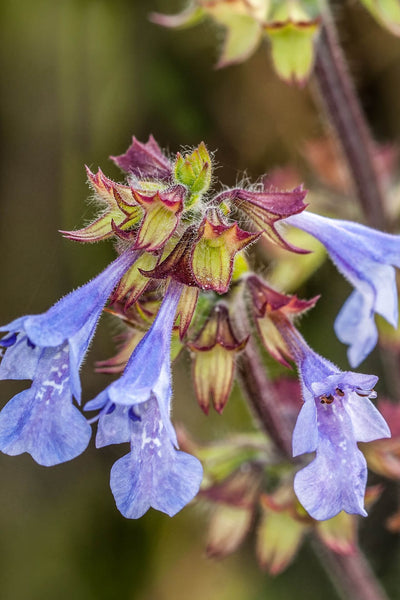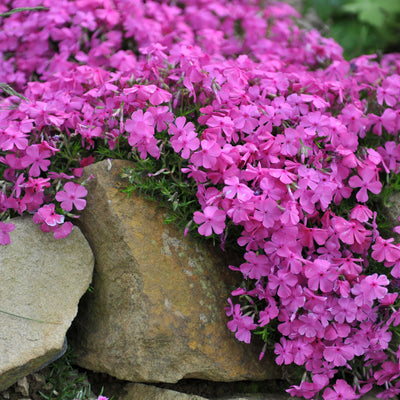Vine: A Simple Plant That Enhances Your Home and Garden in a Beautiful, Easy Manner

Vines are one of the simplest botanical ways to incorporate greenery into your living spaces. These climbing and trailing beauty works aren’t just imposing to behold. However, they require little maintenance while also contributing to the eco-system and enhancing both the garden and your home. They might both transform any garden and neighboring its way into an ideal place of solitude while still bringing other concealed worth below its surface. Lyreleaf Sage is a stunning ground cover that goes good with vines.
A Guide to Vines
Among the most flexible botanic creatures are vines. They come in a variety of shapes and sizes, ensuring that there is something for everyone on the menu. The vines may climb and scatter, and flourish in hanging baskets or planters. The following are a few common forms of vines encountered:
English Ivy – Hedera helix
English ivy, which thrives on sheer walls or interior walls, is one of the most well-liked plants. It’s perfect for green pergolas and hanging baskets since it’s quick to grow and moldable into all sorts of forms.
Monstera – Monstera deliciosa
The Monstera can add some flair to the space. The monstera prefers indirect sunlight and is a simple-to-care-for plant that blooms beautifully. The big divisions of this Asimina, its huge leaves, are daring assortments. This might trellis well and cascade attractively from containers.
Hoya Carnosa
This ‘vine’ is a must-have for novices, and it works well in hanging and basket situations. Clusters of ‘star-shaped’ flowers on a ‘waxy leaf’ are appreciated, and it works well in shady spots.
Passion flower
Passion flower knows its ‘brilliant’ flowers, which bloom in all colors. The outdoor sensation is acceptable in all ‘trellises,’ ‘fences,’ and other structures in the world of vertical gardens.
Pothos
Considered a “houseplant,” but it is “almost” foolproof: the heart-shaped leaves and trailing stems require minimal day-to-day effort.
More Vines
More vines are gaining popularity for their easy care nature – all are seen as “faux” “plants” and can “survive” under “any light”. While all of these require care, the one trick is to provide the maintenance it needs to climb with a bit of love.
The Benefits of Owning a Vine
While vines are widely used to make their homes look better, they can also contribute to the atmosphere in various ways. These are some of the reasons you should have a vine in your home:
Cleanse the Air
Vines cleanse the air by eliminating toxins like formaldehyde and benzene found in furniture and carpets. They improve the atmosphere, making it fresher and more pleasant.
Humidity
Vines help increase the quality of air during the winter and in dry climates. They can help relieve dry skin, breathing problems, and even reduce viruses.
Psychological and Emotional Benefits
The presence of plants, especially in and around the house, has a generally calming effect. According to research, a house with more plants—particularly vines—reduces anxiety levels and stress. Their presence evokes a soothing sensation, which may help in relaxation and tension relief.
Noise Reduction
It is astounding how vines can act as sound absorbents. Upon tunneling them around windows or the open floor of a room, the sound seems to be absorbed, making them ideal for homes and workplaces that have undesirably high decibels.
Privacy and Seclusion
Other types of vines, such as Pothos and English Ivy, can be grown to cover a fence or a trellis. This is an easy way to create some privacy. They are a great way to create mystery in a backyard or hide things that can be unsightly to the eye.
Maximizing Small Spaces
For areas with minimal horizontal space, such as small rooms that may have low ceilings, vines can be used to grow upwards and decorate the room or wall. They can grow up fast and cover the wall, giving the room a vertical, tri-dimensional look.
How Do I Care for Your Vines?
Vines are easy to take care of. Other than a few tricks that you have to keep in mind, they are low-maintenance plants.
Lighting
Not all vines require direct sunlight. Some, such as Pothos and the Philodendrons, are low light requirements. Others, such as Monstera and Passionflower, require indirect sunlight. Ensure you place your vine in an appropriate and optimal position.
Watering
While vines can be somewhat tricky, the best rule of thumb to follow when watering is to poke your finger roughly one inch deep into the soil. If it’s dry, you should water it. However, the soil should still be draining enough to prevent waterlogging, which can kill the roots.
Humidity
The more humidity, the better with most vines. If you live in a dry climate or it’s winter, some heater work dries the room, so you might want to consider a humidifier. If the humidity is standard, you could always mist the vines.
Fertilizing
Fertilizing involves watering the vines and the leaves during the summer using a balanced liquid fertilizer at intervals, best done every four weeks. The vines and leaves should have all the nutrients necessary to maintain and grow a healthy flora, but many leaves and too few flowers can be a problem.
Pruning
When the foliage becomes a little more unruly, it is best to prune the vines. Never prune more than one-third of the total foliage, ensuring you maintain the general desired shape. This keeps the foliage more robust and healthier.
Support Structures
Most climbing plants also require some vertical support to fully develop. This vertical support can be something simple like a fence or a trellis, or it can be a moss pole. Just ensure that the vines don’t get entangled and lose support.
Where They Can Be Located
Among the plants that can be found both inside and outside, vining is by far one of the most versatile. If you want to create a more lively touch to your living or add a touch of elegance to your garden, vining could help you with that.
Outdoor
ines can be grown in the garden, on the patio, and even on the balcony. You could let them grow on the fence, trellis, or even the pergola if what you are looking for is an elegant touch to your outdoor area and even some privacy.
Indoor
If you don’t have enough outdoor space, there are numerous vines you can grow indoors. Put them on a shelf or make them dangle from pots. If your living room needs life, or your working space needs elegance, vines are a perfect choice.
The Many Types of Vining Plants
Vining plants can be ornamental, useful, or even edible! Here is a description of their typologies:
Vegetable Vining
Cucumber, squash, or even green bean vines are not that difficult to grow. These types, apart from the edible fruit, present beautiful flowers before fruiting.
Flowering Vines
Clematis, jasmine, or climbing wisteria are ideal for the general garden. One vine offers an inconceivably peculiar aromatic aura that no other plant can match.
Greenery Vines
A Vinca abundant with lushness or a sweet potato vine might be an excellent option if the rest of your location lacks drama, but you simply want a vibrant burst of fresh green!
Final Thoughts: Embrace the Beauty of Vines
Plants with functions such as air purifying and aesthetic appeal will always bring a smile to a space. With all the beautifying components of these types of plants, they are also a convenient method of refreshing indoor air, delightful to cultivate. These plants’ shade or privacy qualities are a significant evolution over the bulk of garden plants. We also have a kit of 15 Ground Cover Favorites that goes well with vines. So, do you want vines in your home?
Come to us, TN Nursery, now and receive a new, fantastic collection of vines that will enrich your home or workplace. We may be contacted there to guide you to choose plants according to your preferences and help get you sparked on the growing experience!
FAQs
What is the rule of 3 in gardening?
The rule of 3 in gardening is arranging plants in odd numbers, mainly 3’s, for the purpose of design, and balance, and adding visual interest. Having plants in threes, such as when planting vines or other plants, helps beautify the arrangement, giving more pleasure to those looking at it.
What vine stays green all year round?
Plants such as the English Ivy (Hedera helix) and Virginia Creeper (Parthenocissus quinquefolia) are perennial vines that are green all year. Just about everywhere elegance is needed in the garden or home: these plants are evergreen and hardy in all regions.
What is the easiest climbing vine to grow?
Pothos (Epipremnum aureum) is an example of an easy climbing vine. It's easy to grow, and will survive in dark conditions. A beginner would find it easy to work with. Either it will climb on trellises, or hang most elegantly from shelves, or from hanging baskets.
Is there a vine that blooms all summer?
Yes, there are many summer blooming annual vines, one of which is the Morning Glory (Ipomoea). Along with blooms that are bright and colourful, funnel-shaped flowers of rosy purple, lavender, sunrise orange, and midnight blue, the Morning Glory is perfect to cover that boring fence or that empty trellis.
What is the longest blooming climbing vine?
One of the longest blooming climbing vines is the Wisteria. The Wisteria can take a few weeks to bloom, blooming in the spring or in the early half of summer. The marvelous purple and white flowers that bloom are a super take, especially when wrapped around a trellis or a pergola.
Can you plant climbing vines in the fall?
Yes, fall is the ideal time to plant many climbing perennial vines. Autumn is a perfect time of year to plant vines, they are, roots are bound to take hold the minute the cooler winter sets in. Do make sure that the vine is bushes and hardy for your climate zone, to make sure they survive the winter.



